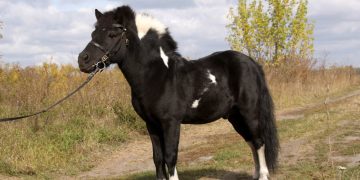Knowing how to grab a cat properly is essential for cat owners, veterinarians, and anyone interacting with felines. While cats may seem agile and independent, improper handling can cause them discomfort, stress, or even injury. Whether you need to pick up your cat for grooming, veterinary care, or simple affection, it’s crucial to do it safely and respectfully.
In this in-depth guide, we’ll break down the best techniques for picking up a cat without hurting it, common mistakes to avoid, and tips for handling cats of different temperaments.
Why Proper Cat Handling Matters
Unlike dogs, who are generally more accepting of being picked up, cats have a strong sense of personal space. Mishandling a cat can lead to:
✅ Physical Injury – Improper lifting can strain their muscles or joints.
✅ Fear & Anxiety – A bad experience can make a cat resist handling in the future.
✅ Aggression – A scared or uncomfortable cat may scratch or bite in self-defense.
Understanding how to properly grab a cat ensures both you and the cat have a stress-free interaction.
How to Grab a Cat and Pick It Up Safely
1. Assess the Cat’s Mood First
Before reaching for a cat, check its body language:
🚦 Signs the Cat is Relaxed and Ready to Be Picked Up:
- Tail is relaxed, not flicking aggressively.
- Ears are upright and forward.
- Purring or rubbing against you.
- Slow blinking (a sign of trust).
🚫 Signs the Cat Does NOT Want to Be Picked Up:
- Tail flicking rapidly or tucked between legs.
- Flattened ears (a sign of irritation or fear).
- Growling, hissing, or swatting.
- Tense body posture, backing away from you.
💡 Pro Tip: If the cat seems nervous, allow it to approach you first. Let it sniff your hand before attempting to pick it up.
2. Use the Correct Gripping Technique
Once you’ve assessed that the cat is comfortable, follow these steps:
Step 1: Approach Gently
- Speak softly and avoid sudden movements.
- Crouch down to the cat’s level rather than towering over it.
- Extend your hand for the cat to sniff before making contact.
Step 2: Support the Chest and Hindquarters
- Place one hand under the cat’s chest, just behind its front legs.
- Place your other hand under the cat’s hind legs to provide full-body support.
🔴 Avoid: Grabbing a cat solely by the front legs or the scruff of the neck (this can cause discomfort and distress).
Step 3: Lift Smoothly & Hold Securely
- Lift gently while keeping the cat close to your chest.
- Let the cat rest against your body for extra security.
- Support its entire weight to prevent dangling, which can be uncomfortable.
How to Hold a Cat Comfortably
Once you’ve successfully picked up the cat, holding it properly is key.
✅ Best Holding Positions:
🔹 Cradle Hold – Hold the cat close to your chest with its paws resting on your arm.
🔹 Football Hold – Support the cat along your forearm, like holding a football.
🔹 Over-the-Shoulder Hold – Some cats like to rest on your shoulder, but be cautious with skittish cats.
🚫 Avoid These Holding Mistakes:
- Holding the cat too tightly (it may struggle or feel trapped).
- Letting the cat dangle by its front legs.
- Ignoring signs of distress (if the cat squirms excessively, it wants to be put down).
💡 Pro Tip: Always release a cat gently, lowering it close to the ground before letting go.
How to Grab a Cat That Doesn’t Like Being Picked Up
Not all cats enjoy being held. If you need to pick up a reluctant or skittish cat:
1. Build Trust First
- Spend time petting and playing with the cat before attempting to lift it.
- Use treats as positive reinforcement.
2. Use a Towel or Blanket (If Necessary)
If you need to grab a cat that is extremely nervous (for vet visits, medication, or emergencies), gently wrap it in a towel for security.
3. Scruffing (Only for Medical Situations)
Scruffing (grabbing the loose skin at the back of a cat’s neck) should only be done in emergencies or by professionals. It mimics how a mother cat carries kittens but can be distressing for adult cats.
Special Considerations for Different Cats
🐾 Kittens: Handle gently with both hands and ensure they feel secure. Kittens are more adaptable to being picked up, so start handling them early.
🐾 Senior Cats: Older cats may have arthritis or joint pain. Always support their entire body and avoid unnecessary lifting.
🐾 Overweight Cats: Extra care is needed to provide full support. Never let their belly hang down without support, as this can strain their spine.
🐾 Stray or Feral Cats: If dealing with an unsocialized cat, avoid handling unless necessary. Use a carrier or gloves for safety.
When NOT to Pick Up a Cat
🚫 After Eating: Cats dislike being lifted with a full stomach.
🚫 During Playtime: If a cat is engaged in play, picking it up can be frustrating for them.
🚫 If the Cat is in Pain: Injured or sick cats may react aggressively. Always approach cautiously.
Conclusion: The Right Way to Grab a Cat
Learning how to grab a cat correctly is essential for cat owners and animal lovers. By understanding a cat’s body language, using the proper lifting technique, and respecting their personal boundaries, you can make handling a positive experience.
Remember: Not all cats enjoy being picked up, but with patience and gentle handling, many can learn to tolerate or even enjoy it.
✅ Key Takeaways:
- Always check the cat’s mood before picking it up.
- Use both hands to provide full-body support.
- Hold the cat securely but gently.
- Release the cat calmly when it wants to go.
- Avoid unnecessary lifting, especially for cats that dislike it.
By following these tips, you can ensure that you pick up a cat without hurting it and build a trusting bond with your feline friend! 🐱💕

























